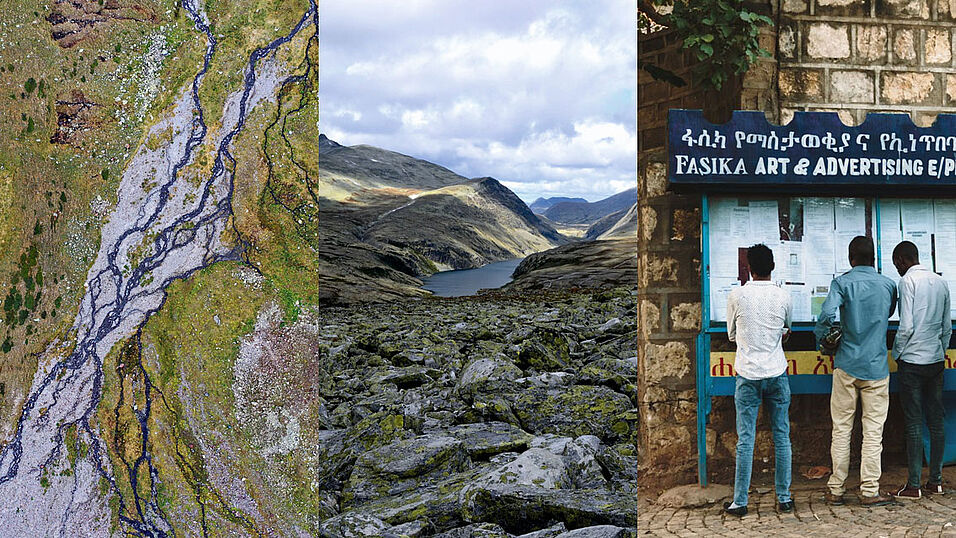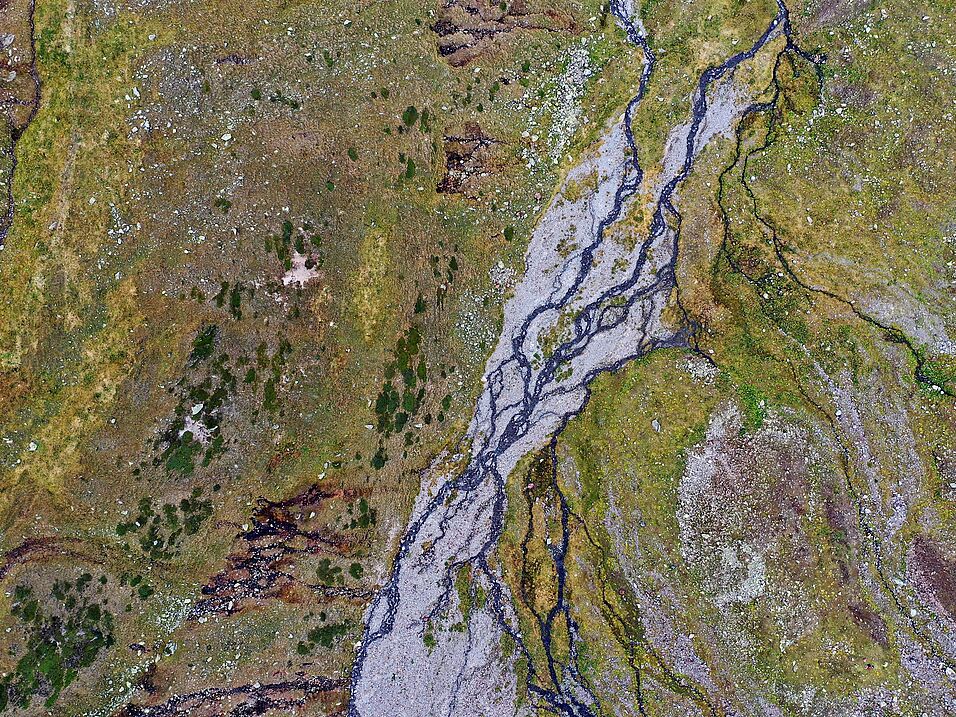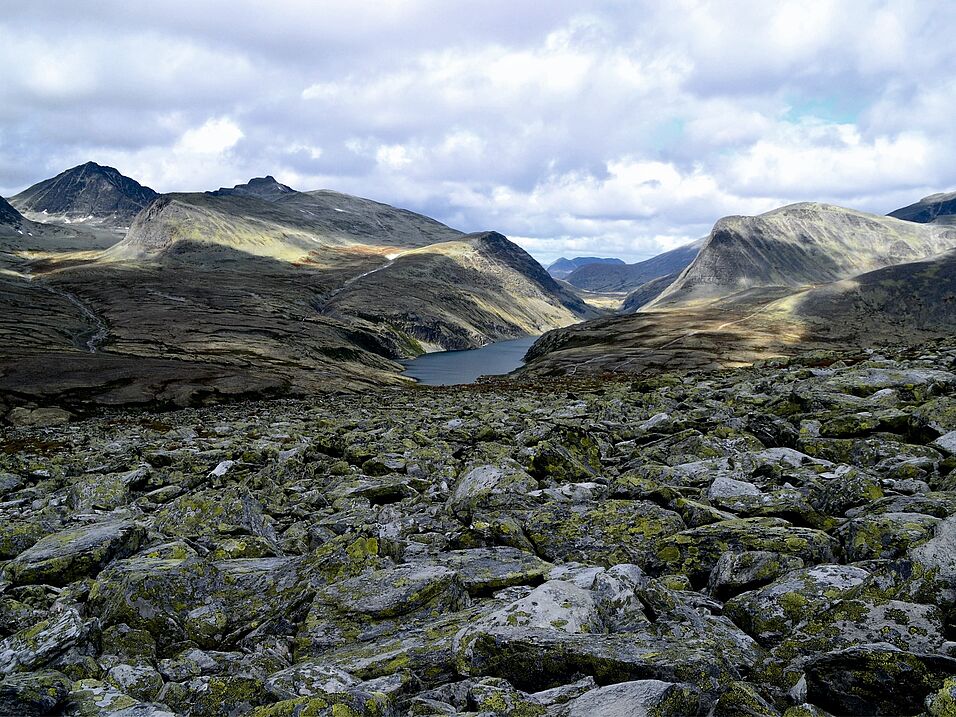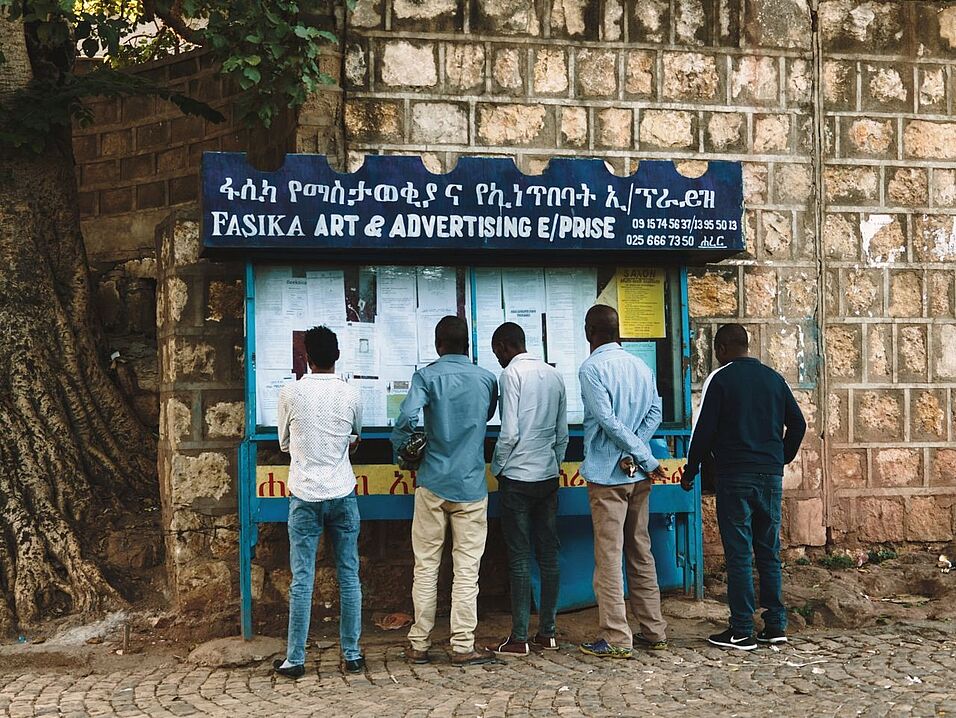Sie können unter diesem Link für die Kolleg*innen abstimmen.
- Stefan Haselberger | A topographic signature of life
"Abiotic and biotic processes constantly create and shape the landscapes we live in. Especially, vegetation and geomorphic processes interact in various ways. In a palimpsest of overlapping spatial and temporal relationships, it is challenging to identify causal relationships. Glacier foreland environments are unique open-air laboratories that help us to observe initial conditions for vegetation development in a highly active geomorphic surrounding. The expanding discipline of biogeomorphology is focused on this linkage of ecological and geomorphic processes and has the potential to provide knowledge for the application of Nature Based Solutions in environmental management. Within the PHUSICOS project, a group of geomorphologists and ecologists seek to use this knowledge to find new approaches to stabilize alpine slopes."
- Philipp Marr | Climate witnesses
"Glaciers and their current retreat are often utilized as iconic structures to confront us with climate change. Research often focusses on modelling trends concerning glacier variability. However, to improve predictions and to understand the impacts on environmental processes it is essential to comprehend past glacier fluctuations and their timings. It is known that rocky (peri-)glacial landforms (visible in the foreground) generally form and are active during cold and stabilize during warmer climates. With certain methods it is possible to put those landforms on a chronological basis and reconstruct climate variabilities from their activity and stabilization. We are able to reconstruct the climate of particular regions several thousands of years back. Rocky landforms are therefore, true witnesses of past climates."
- Raffaella Pagogna | Windows of opportunities
"This photo, titled "Windows of opportunities", was taken 2019 during fieldwork for my PhD project in Harar, Ethiopia. In my research I am particularly interested in the factors shaping migration aspirations. These factors include translocal networks and the use of social media conveying imaginaries about faraway places, as well as migration policies impacting the capabilities to realize migration projects. Therefore, I examined how migration management projects are implemented on a local scale through migration information campaigns and awareness raising programs and how they shape the local perceptions and discourses on migration in the region. This photo shows town dwellers studying work and/or training offers on the local bulletin board. This bulletin board is also used to disseminate information about the risks of human trafficking and migrant smuggling in Harar."




